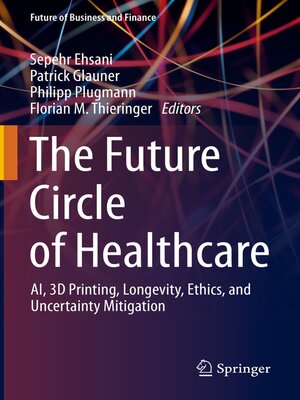The Future Circle of Healthcare
ebook ∣ AI, 3D Printing, Longevity, Ethics, and Uncertainty Mitigation · Future of Business and Finance
By Sepehr Ehsani

Sign up to save your library
With an OverDrive account, you can save your favorite libraries for at-a-glance information about availability. Find out more about OverDrive accounts.
Find this title in Libby, the library reading app by OverDrive.



Search for a digital library with this title
Title found at these libraries:
| Library Name | Distance |
|---|---|
| Loading... |
The past decade has brought to the fore the critical need to constantly envision and consider various scenarios where ongoing trends and sudden changes could together alter the provision of healthcare and the direction of medical research. This book brings together scholars whose areas of expertise represent different themes that are essential to understanding how healthcare might change and evolve over the next decade. What lessons can one take away from current and past developments? The themes explored by the book rest on four pillars. The first is the rapid pace and ubiquity of technological advances in areas such as artificial intelligence, machine learning, additive manufacturing and wearable electronics. The second pillar concerns healthy aging, longevity and the management of chronic diseases. The third is the imperative to remain cognizant of the ethical dimensions of medical decisions, adapting bioethics to ongoing changes in healthcare provision. Finally, the fourth pillar relates to how uncertainty in different domains of medical knowledge can be mitigated and translated into clinical practice. For example, how should uncertainty with the results of clinical trials for a new treatment be dealt with? What cost-benefit analyses would be most appropriate for the situation? Chapter authors identify respective challenges and promising opportunities, discussing how these could contribute to envisioning the future scope of healthcare when it comes to providing medical, economic and ethical values to human societies.
Chapters 1, 4, 12, and 20 are available open access under a Creative Commons Attribution 4.0 International License via link.springer.com.







